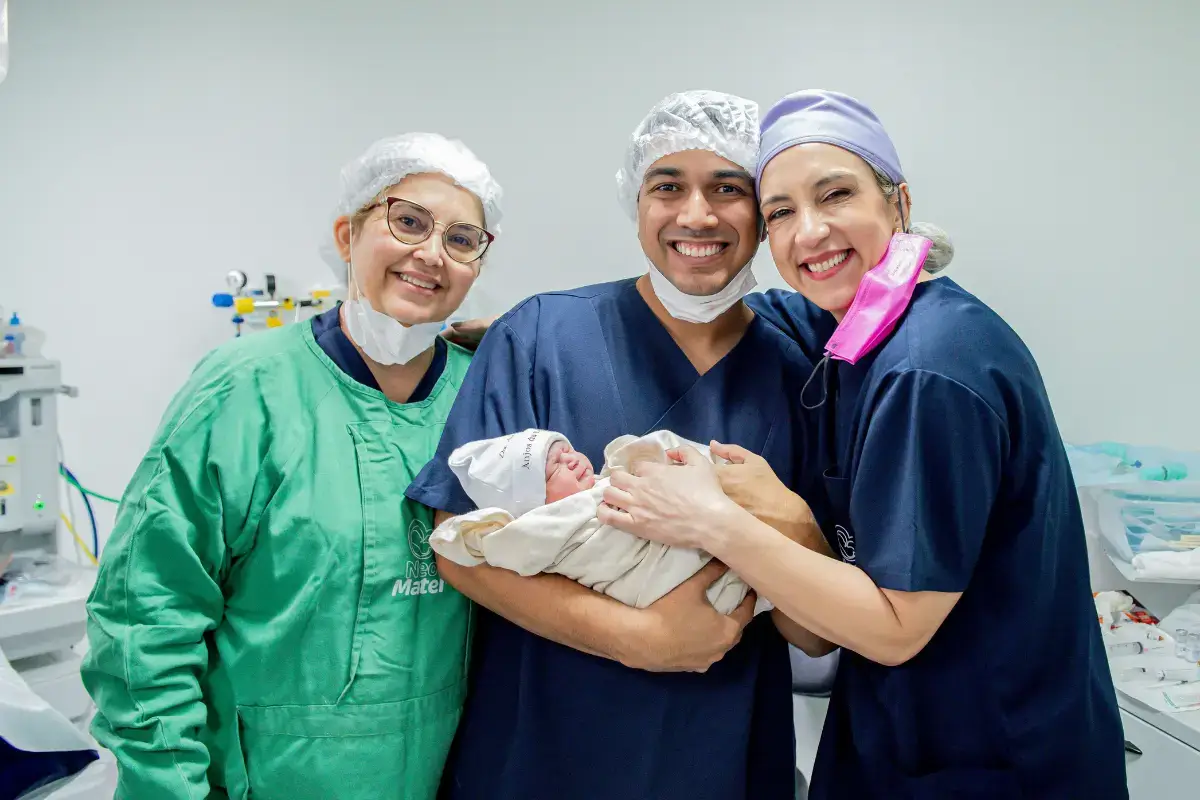Deciding between a C Section delivery and natural birth can feel overwhelming, especially with so many opinions and stories around.
Both methods bring your baby into the world safely, but they are very different in process, pain, and recovery.

In this guide, we’ll explain everything from what a C Section delivery is, to recovery tips, pros and cons, and why one may be better for you or your baby. Whether it’s your first pregnancy or you’re comparing options after a previous delivery, this guide will help you choose with confidence.
What is a C Section Delivery?
A C Section delivery, also called a cesarean section, is a surgery where doctors make a cut in your belly and uterus to deliver the baby.
According to the CDC, about 32% of U.S. births are C Section deliveries. Sometimes it’s planned, and sometimes it’s done in an emergency if vaginal birth is risky.
When is a C Section Delivery Recommended?
- Baby is breech (feet first) or too large for vaginal birth.
- Placenta problems like placenta previa (blocking the cervix).
- Carrying multiples (twins or more) or stalled labor.
- Mother’s health issues, such as high blood pressure or infections.
Elective C Section deliveries are possible for personal reasons, but doctors like those at Mayo Clinic advise avoiding them unless medically necessary because of higher risks.
What is Natural Birth?
Natural birth, or vaginal delivery, is when the baby comes through the birth canal with the help of contractions. About 68% of U.S. births happen this way.
For first-time moms, labor usually lasts 4–8 hours and includes contractions, pushing, and delivery of the placenta.
Types of Labor in Natural Birth
- Spontaneous Labor: Starts on its own near the due date.
- Induced Labor: Medicines like Pitocin are used if you are overdue.
- Augmented Labor: Extra help given if contractions are too slow.
Natural birth may include pain relief like epidurals, or for some moms, it’s done with very few medicines.
C Section Delivery vs Natural Birth – Key Differences
Here’s a simple comparison between a C Section delivery and a vaginal birth:
| Aspect | C Section Delivery | Natural Birth |
|---|---|---|
| Procedure | Surgical cut in belly & uterus (45–60 mins) | Baby comes through birth canal (hours of labor) |
| Hospital Stay | 2–4 days | 1–2 days |
| Recovery Time | 6–8 weeks | 2–6 weeks |
| Pain During | Minimal (anesthesia used) | Intense contractions and pushing |
| Pain After | Incision soreness, gas pains | Vaginal soreness, possible tears |
C Section Delivery vs Natural Birth – Pros & Cons
Every delivery type has good and bad sides. Here’s a balanced look:
Pros of Natural Birth
- Shorter recovery (2–6 weeks).
- Quicker bonding and breastfeeding.
- Lower risk of infection or blood loss.
- Baby’s lungs benefit from the “squeeze” through the canal.
Cons of Natural Birth
- Longer or unpredictable labor.
- Vaginal tearing needing stitches.
- Risk of urinary incontinence later in life.
Pros of C Section Delivery
- Planned timing reduces anxiety.
- No labor pain during the procedure.
- Safer for high-risk cases (like breech babies).
- Less immediate pelvic floor damage.
Cons of C Section Delivery
- Recovery is longer (6–8 weeks).
- Higher chance of infection, blood clots, and complications.
- Scar tissue may affect future pregnancies.
- Longer hospital stay compared to natural birth.
Why is Natural Birth Often Better for Baby?
Natural birth exposes the baby to mom’s healthy bacteria, which helps build the baby’s immune system and gut health.
Contractions also help squeeze fluid from the baby’s lungs, reducing breathing problems. Studies show babies born through natural delivery have lower risks of asthma, allergies, obesity, and diabetes later in life.
In contrast, babies born through a C Section delivery may face slightly higher risks of breathing issues and certain health conditions. However, in emergencies, C Section delivery is lifesaving.
What is More Painful? C Section or Natural Birth?
Pain is different for everyone, but here’s what most women report:
- During Delivery: Natural birth is more painful due to contractions (7–10/10 without pain relief). C Section delivery is painless during surgery because of anesthesia, though you may feel pressure.
- After Delivery: Vaginal soreness usually heals in days. C Section pain lasts weeks, with discomfort from the incision, gas pains, and slower mobility.
A 2014 study showed women recovering from C Section delivery used more pain medicine than those who had vaginal births.
Recovery – C Section Delivery vs Natural Birth
- Natural Birth Recovery: Rest, ice packs, and pelvic floor exercises (like Kegels). Vaginal tears usually heal in 2 weeks.
- C Section Delivery Recovery: Avoid heavy lifting for 6 weeks, care for incision site, and walk gently to relieve gas. Full healing takes longer.
Both methods also require emotional care since postpartum blues are common.
Is Normal Delivery Possible After C Section (VBAC)?
Yes! Vaginal Birth After Cesarean (VBAC) is successful about 70% of the time. If your previous C Section scar is low-transverse, VBAC is often safe.
Risks like uterine rupture are rare but possible, so it depends on your doctor and hospital.
Which is Better? C Section Delivery or Natural Birth?
There’s no one answer—it depends on your health, your baby’s needs, and your doctor’s advice.
- Normal delivery is better for most low-risk pregnancies because it means quicker recovery and long-term health benefits for both mom and baby.
- C Section delivery is better in high-risk situations where vaginal birth could be dangerous.
Globally, 70–80% of deliveries are natural, while C Section deliveries are increasing due to medical or personal reasons.
Common Myths Busted
- Myth 1: C Section delivery is easier. ➝ It’s actually a major surgery with longer recovery.
- Myth 2: Natural delivery always causes severe tears. ➝ Many women don’t tear badly, and episiotomies are less common now.
- Myth 3: VBAC is too risky. ➝ With proper care, VBAC is safe for most women.
Final Thoughts
In the debate of C Section delivery vs natural birth, natural birth is usually better for healthy pregnancies because of faster recovery and baby benefits.
But C Section delivery is a true medical blessing in emergencies or when complications arise.
The best choice depends on your health, your baby’s safety, and your doctor’s advice. Always discuss your options, listen to your body, and remember – the goal is a safe delivery and a healthy baby. Congratulations on your journey into motherhood!
FAQs on C Section Delivery vs Natural Birth
1. What are the disadvantages of natural delivery?
Long labor, vaginal tears, and pelvic floor issues like incontinence.
2. Why choose C Section delivery over natural birth?
It’s safer in high-risk cases such as breech position, multiples, or stalled labor.
3. Does C Section delivery affect breastfeeding?
Sometimes it delays the start, but skin-to-skin contact helps, and most moms breastfeed successfully.
4. What percentage of births are C Section vs natural worldwide?
About 70% are natural, while C Section delivery rates vary between 10–50% depending on the country.
5. Can C Section delivery cause long-term pain?
Some women may feel scar sensitivity, but chronic pain is rare.
You May Also Like
- Why There Is Back Pain During Periods – Instant Relief Tips for Women
- आपातकालीन गर्भनिरोधक गोलियों के उपयोग, फायदे और नुकसान
- कॉपर टी क्या है? कैसे लगती है, फायदे-नुकसान और कीमत, निकालने का तरीका




